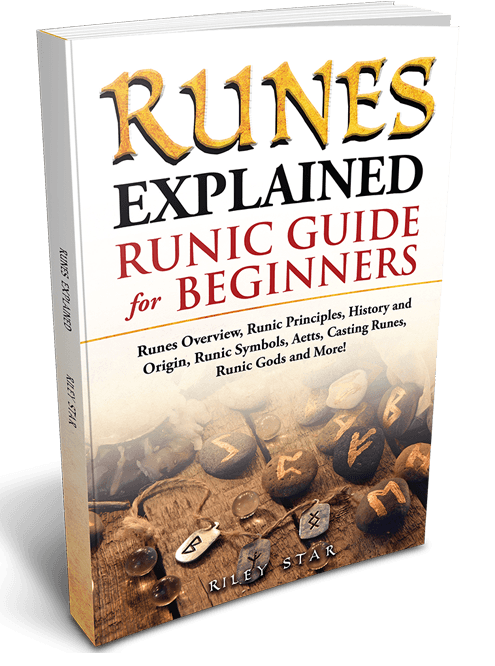TABLE OF CONTENTS
- Introduction to Runes 1
- Facts and Meanings of Runes 2
- Rune Masters 3
- Chapter One: The History and Uses of Runes 5
- Uses of Runes 6
- Runic Links 7
- The Runic Alphabet and Its History 8
- Practical Uses of Runes in Ancient History 10
- Other Uses of Runes 13
- Chapter Two: Runic Symbols and Keywords 15
- What Runes to Purchase 16
- How to Protect Your Runes 16
- The Aetts 17
- Language and Alphabetical Links 19
- Runic Symbols 20
- Runic Names 23
- Elemental Links 25
- Earth Element 25
- Water Element 26
- Air Element 26
- Fire Element 27
- Chapter Three: The Runic Gods 29
- The Runic Gods 30
- Tyr – The God of War 31
- Odin – The Chief God and Lord of the Slain 31
- Thor – The God of Thunder 32
- Freyr – The God of Peace, Fertility, and Good Fortune 33
- Runic Meanings 34
- Runic Poetry 35
- Chapter Four: Freyr’s Aett 37
- Fehu 38
- Uruz 41
- Thurisaz 45
- Ansuz 48
- Raido 51
- Kaunuz 54
- Gebo 57
- Chapter Five: Haegl’s Aett 59
- Hagalaz 60
- Nauthiz 63
- Isa 66
- Jera 69
- Eihwaz 71
- Chapter Six: Tyr’s Aett 75
- Teiwaz 76
- Berkana 79
- Ehwaz 83
- Mannaz 86
- Laguz 89
- Inguz 92
- Chapter Seven: The Blank Runes and Rune Casting 95
- Wyrd or Blank Rune 96
- The Wyrd Rune in a Casting 99
- Changing Name Based on Runic Symbols 99
- Runic Kabbala 102
- What is Kabbala? 103
- Bind Runes 106
- Different Ways in Casting Runes 108
- The Rune Master’s Way 109
- Odin’s Casting 110
- The Runic Cross 111
- Chapter Eight: Conclusion and Samples of Runic Reading 113
- Let’s Start the Exercise! 114
- Practicing with Sigils 116
- Runes for Healing Exercise 118
- Just a Precaution 119
- Photo Credits 123
- References 125
- Runic Philosophy and Magic – Norse – Mythology.org 125
- The Meanings of the Runes – Norse – Mythology.org 125

